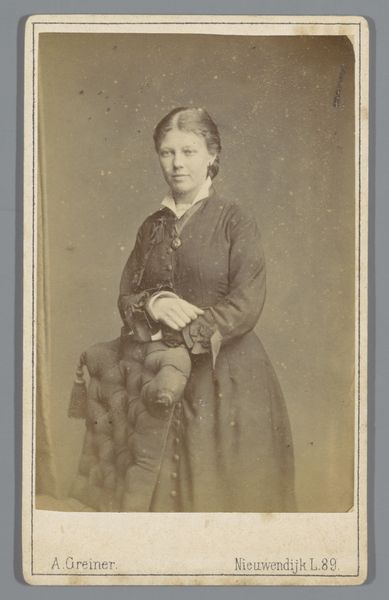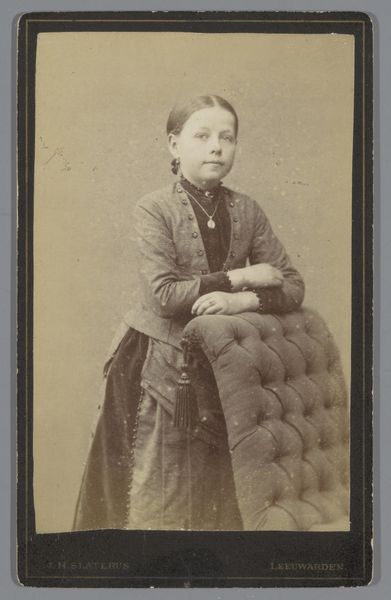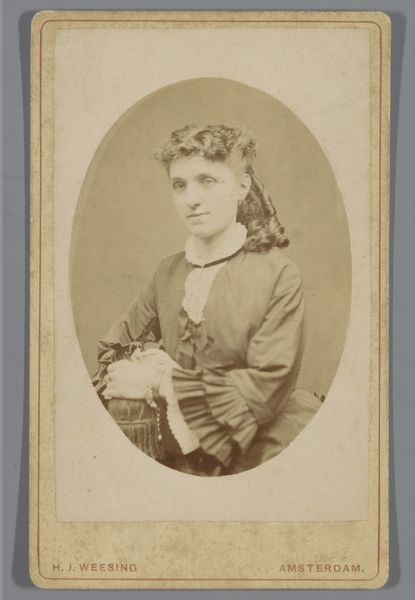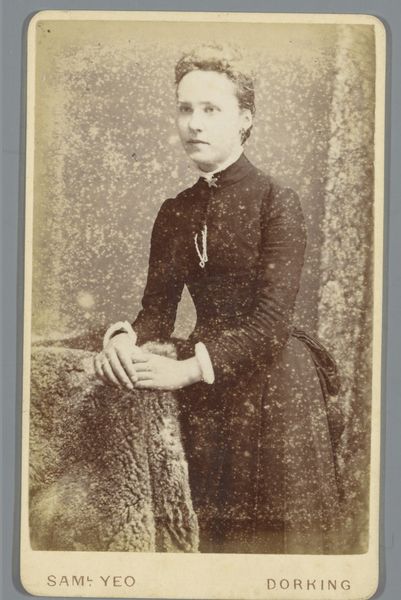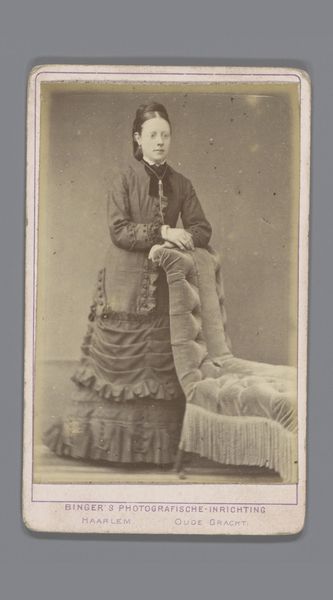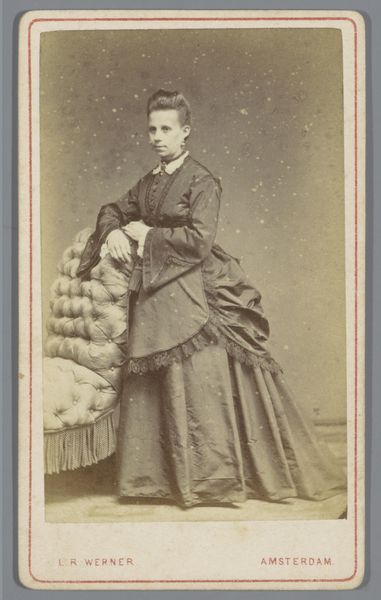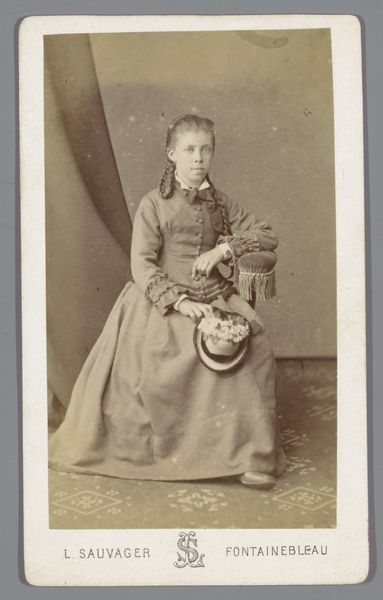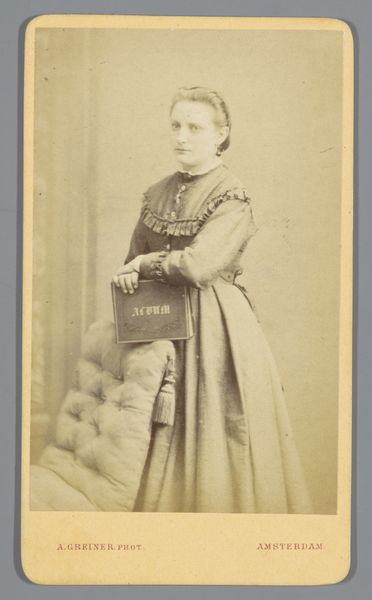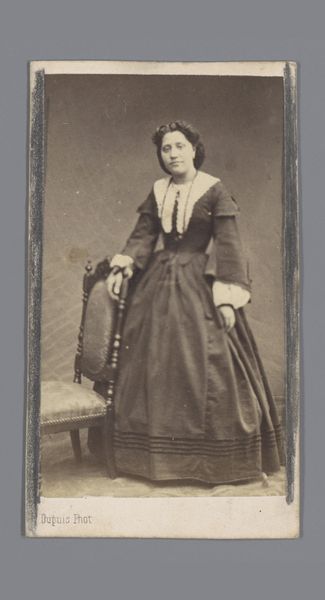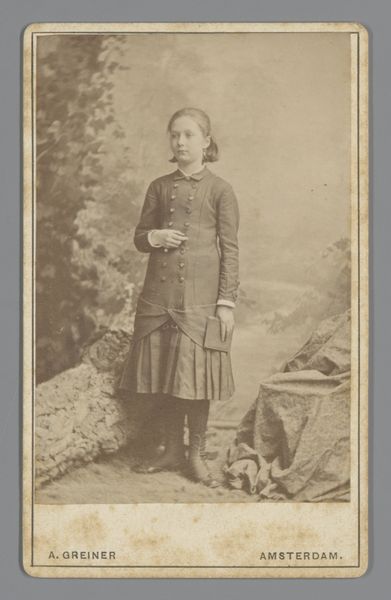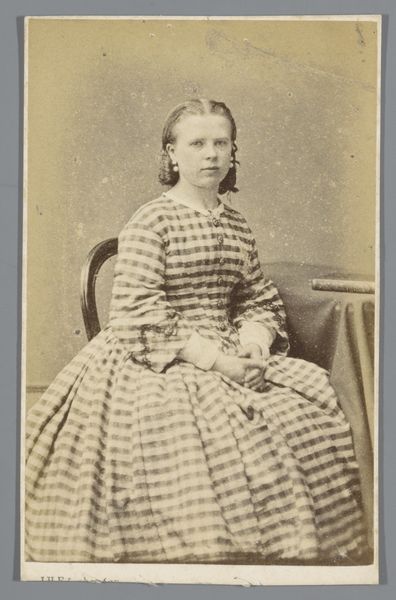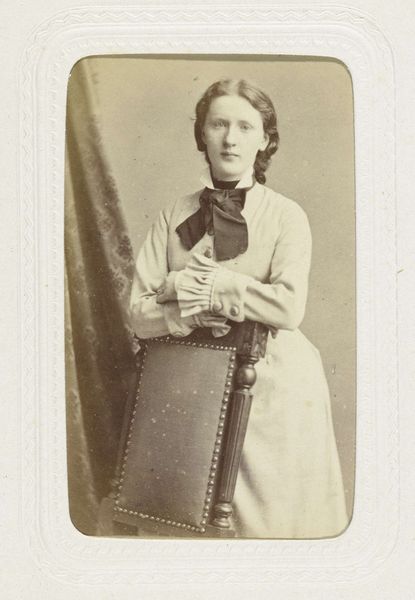
daguerreotype, photography
#
portrait
#
daguerreotype
#
photography
#
historical fashion
#
19th century
#
realism
Dimensions: height 105 mm, width 60 mm
Copyright: Rijks Museum: Open Domain
Editor: This is "Portret van een onbekende vrouw achter een stoel" by Albert Greiner, sometime between 1861 and 1874. It’s a daguerreotype, so photography. The sepia tone gives it such an antique feeling, almost dreamlike. What can you tell me about it? Curator: Well, look at the labor involved. The daguerreotype process itself was incredibly complex and painstaking. Think about the craft and the chemicals. Silver-plated copper, polished to a mirror finish, sensitized with iodine fumes... the labor of the photographer but also that of all the tradespeople who made the chair and her garments. Editor: So you’re focusing on the actual creation process. Curator: Precisely! Consider the context. This was the 19th century, and the rise of photography democratized portraiture, moving it away from solely being available to the upper classes with disposable income for commissioned oil paintings. But the sitter is an “unknown woman” of whom? For whom was the luxury and labour spent on photography reserved? What were the working conditions like for women like the one shown, versus men? This portrait represents access but also control of labour by the burgeoning bourgeois, no? Editor: It’s true, that chair and the fabrics do look expensive, maybe suggesting that even 'democratized' access still was determined by societal rank... Are you suggesting there's commentary here on consumption, that it served a capitalist engine for profit and subjugation? Curator: In a way, yes. Her very presence and fashionable, but likely factory made, dress contributes to systems of capital. And let's think about what has become of her representation, used and consumed as an object on display once again here and now. What is seen of value to current audiences versus then? Editor: It's a striking point. I’d never considered how the simple fact of someone being photographed can feed into these much larger, intricate power dynamics of labor and commodities. I'll never look at another daguerreotype the same way.
Comments
No comments
Be the first to comment and join the conversation on the ultimate creative platform.
